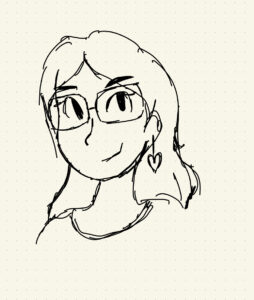My favorite aspect of Casey Reas’ talk was the way he seamlessly wove together the overarching themes of order, chance, and symmetry within the realm of digital art. Right near the beginning, he piqued my curiosity with a thought-provoking statement about the creation of art that is ‘artificial but possesses an organic quality.’ He displayed some of his initial pieces – the first in which he relinquished These pieces, born from a collaboration between his artistic intent and the unpredictability of chance, seemed to possess a unique and mesmerizing sense of nature. Later on, towards the end, he displayed some art pieces which were created with the intention of as much order and symmetry as possible, saying that they had been criticized as ‘having no humanity’. These contrasting statements made me think of nature and the world we live in, which is neither entirely organized nor thoroughly chaotic. Nature is a sort of organized chaos, where natural elements – from the orbit of the sun to the migration of birds – follow a sort of fixed geometry, but there’s enough distortion so that it doesn’t appear eerie. I think this is why interactive media art, particularly geometric and generative art appeals to me incredibly: it captures the very essence of nature, the one that is capable of locking in one’s gaze for a long moment.

Reas’ comments about chance in art also struck me greatly. The calculated randomness gives the illusion of unexpected art that keeps becoming itself, belying the computational nature it has underneath. As Reas explained, the incorporation of chance doesn’t diminish the artist’s role but rather extends it into a realm where the boundaries between intention and serendipity blur. It’s akin to setting up the conditions for creativity to flourish, allowing the elements to interact and shape the final composition organically. In this way, the artist becomes a collaborator with the forces of randomness, enabling art to unfold with a vitality that mirrors the dynamic nature of life itself. This concept challenges conventional notions of authorship and control in art. It suggests that, in the digital age, artists are not just creators but also curators of algorithms and data, fostering a dialogue between human imagination and the machine’s computational abilities.

